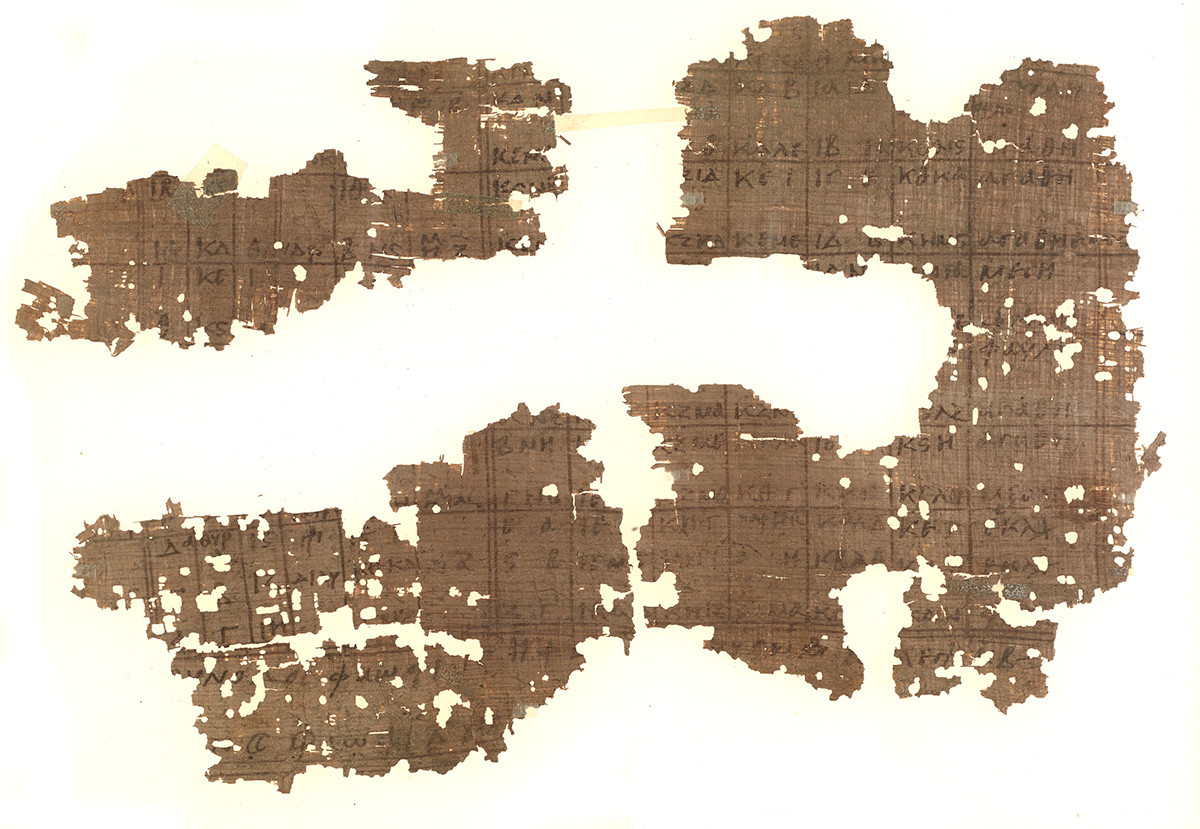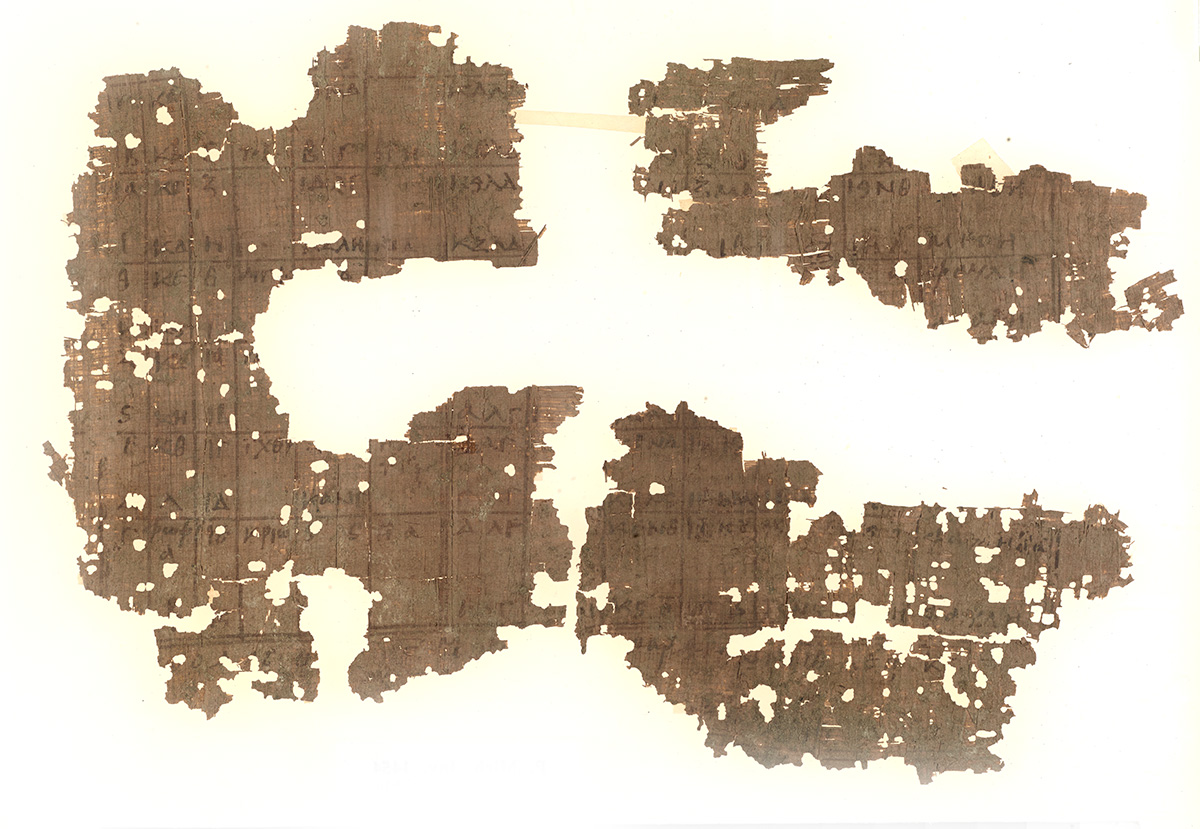Ephemerides

- Astronomical Ephemeris for 467 CE.
- P. Mich. inv. 1454 recto, University of Michigan Library, Papyrology Collection.

- Astronomical Ephemeris for 467 CE.
- P. Mich. inv. 1454 verso, University of Michigan Library, Papyrology Collection.
The papyrus contains an ephemeris (plural: ephemerides) for 467 CE. Ephemerides (lit. “diaries”) were tables listing the positions of the heavenly bodies at intervals of one day. The main use of these tables was astrological—still, they were important texts from a scientific point of view as well, because they represent one of the first attempts at the systematic tabulation of calculated celestial phenomena.
This papyrus is a typical example of an ephemeris; it gives the daily position of the Moon, Sun, Saturn, Jupiter, Mars, Venus, and Mercury from Sept. 19 to Oct. 31 of 467 CE. Cols. I and II give month after month the consecutive days in the Roman and in the Alexandrian calendar (with the Egyptian months Thoth, Phaophi and Hathyr). Col. II gives the lunar days beginning at the new moon. Col. IV-VI concern the Moon: IV-V give the longitudes (sign, degree, and minutes), VI indicates the hour at which the Moon crosses the boundary of a sign. Col. VII-XII concern longitudes (given in degrees and minutes) for the Sun and the planets (Saturn, Jupiter, Mars, Venus, and Mercury). Col. XIII defines each day as good, bad, or indifferent on the basis of astrological considerations. This order reflects the “rule” for how ephemerides should be organized; these rules are preserved in some medieval codices, among which is Par. gr. 2394. Thus this papyrus is almost a textbook example of a Greek ephemeris. In fact, this papyrus is also typical in that it is a codex, as ephemerides are always written in codices and never in rolls (even for early papyri like P. Tebt. 449, dating to the 2nd century CE).
The data in this papyrus were probably calculated using Ptolemy’s Handy Tables, a set of astronomical tables adapted from the ones in the Almagest with explanations on how to use them, which soon became the standard text consulted by astrologers to establish celestial phenomena.
Select Bibliography
- Burckhardt, J. J. 1958. “Zwei griechische Ephemeriden.” Osiris 13: 79-92, at 87-92.
- Curtis, Herber D., and Frank E. Robbins. 1935. “An ephemeris of 467 A.D.” Publ. of the Observatory of the Univ. of Michigan VI: 77-100.
- Neugebauer, Otto. 1975. A History of Ancient Mathematical Astronomy. Studies in the History of Mathematics and Physical Sciences. 1. New York: Springer-Verlag: 1058.

